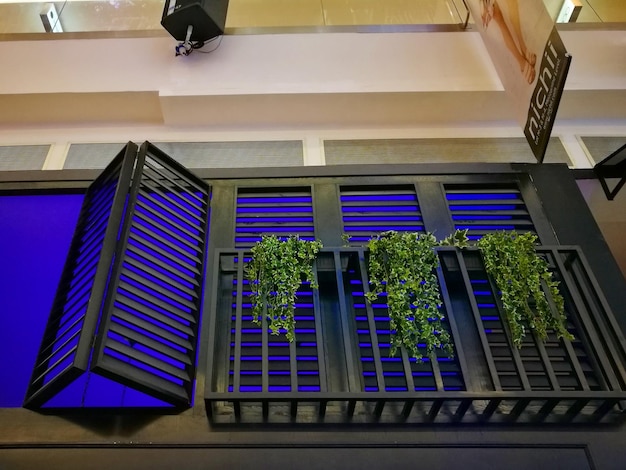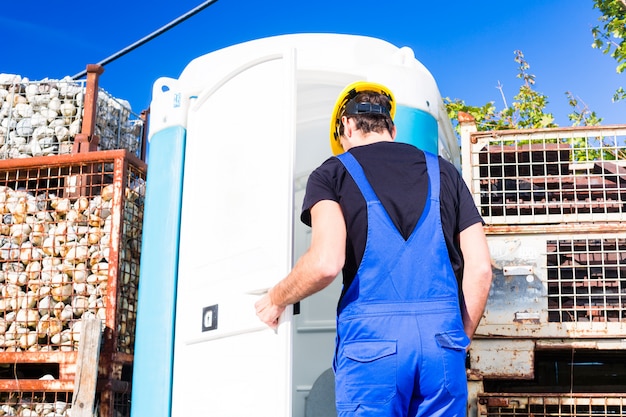Don’t Miss Out: Claim Your 2024 Energy-Efficient Home Upgrade Tax Credits Now!

Homeowners, seize the final opportunity to claim 2024 tax credits for energy-efficient upgrades, reducing your tax burden and enhancing your home’s sustainability before the year concludes.
Time is running out for homeowners to capitalize on the 2024 tax credits designed to encourage energy-efficient home improvements. Don’t miss out on the chance to reduce your tax liability while making your home greener and more comfortable. This article will guide you through everything you need to know to Don’t Miss Out: Last Chance to Claim Your 2024 Tax Credits for Energy-Efficient Home Upgrades.
Understanding the 2024 Energy-Efficient Home Improvement Tax Credits
The 2024 tax year presents a unique opportunity for homeowners to benefit from incentives aimed at promoting energy efficiency. These tax credits can significantly offset the costs associated with upgrading your home, making it more environmentally friendly. Knowing which improvements qualify and how to claim the credits is essential.
Key Tax Credits Available
Several tax credits are available for energy-efficient home improvements. These credits are designed to help homeowners invest in upgrades that not only reduce their carbon footprint but also save them money in the long run.
- Energy Efficient Home Improvement Credit: Covers 30% of qualified expenses for improvements like new windows, doors, insulation, and air conditioners.
- Residential Clean Energy Credit: Offers a credit for investments in renewable energy, such as solar panels, solar water heaters, and wind turbines.
- Home Energy Audit: While not a direct improvement, conducting a home energy audit can help identify areas where energy efficiency can be improved, making future upgrades more impactful.

Eligibility for Energy Tax Credits
To be eligible for these tax credits, homeowners must meet certain criteria. Understanding these requirements is crucial to ensure that your investments qualify for the credits.
- Home Ownership: You must own the home where the improvements are being made.
- Primary Residence: The home must be your primary residence and be located in the United States.
- Qualified Improvements: The improvements must meet specific energy efficiency standards set by the IRS.
By understanding these eligibility requirements, homeowners can make informed decisions about which upgrades to pursue and how to properly document their expenses for tax purposes. Ensuring that all criteria are met will help streamline the tax filing process and maximize the benefits of the credits.
In conclusion, the 2024 energy-efficient home improvement tax credits offer a substantial incentive for homeowners to invest in upgrades that enhance energy efficiency and sustainability. By understanding the available credits and eligibility requirements, homeowners can make informed decisions and claim these valuable tax benefits before the end of the tax year.
Navigating the Deadline: Why Act Now?
The clock is ticking for homeowners looking to take advantage of the 2024 energy-efficient home improvement tax credits. Understanding the urgency and benefits of acting quickly can make a significant difference in your financial planning.
Limited Time Offer
Tax credits are often subject to expiration dates, and the 2024 credits are no exception. With the end of the tax year fast approaching, it’s crucial to plan and execute your home improvements promptly.
These tax credits are available for expenses incurred during the 2024 tax year. Any improvements completed after December 31, 2024, may not be eligible under the same terms. Therefore, homeowners must act swiftly to ensure they can claim these benefits.
Maximize Your Savings
Delaying your energy-efficient home upgrades means potentially missing out on substantial tax savings. Procrastination can lead to a missed opportunity to reduce your tax liability and improve your home.
The tax credits can cover up to 30% of qualified expenses, providing a significant return on investment. By acting now, homeowners can immediately benefit from these savings, reducing their overall costs and making their homes more energy-efficient.
Future-Proof Your Home
Beyond the immediate tax benefits, energy-efficient home upgrades offer long-term advantages. These improvements can increase your home’s value, reduce energy bills, and make your living space more comfortable.
- Increased Home Value: Energy-efficient homes are more attractive to potential buyers and can command higher prices in the real estate market.
- Reduced Energy Bills: Upgrades like better insulation, energy-efficient windows, and modern HVAC systems can significantly lower your monthly utility bills.
- Enhanced Comfort: Improved energy efficiency leads to more consistent temperatures throughout your home, reducing drafts and hot spots.
In summary, navigating the deadline for the 2024 energy-efficient home improvement tax credits is essential for homeowners looking to maximize their savings and improve their homes. By acting now, you can take advantage of these limited-time incentives, future-proof your home, and enjoy the long-term benefits of energy efficiency.
Which Home Upgrades Qualify for the Tax Credits?
Knowing which home upgrades qualify for the 2024 energy-efficient tax credits is crucial for homeowners aiming to maximize their savings. Understanding these specific qualifications can help you make informed decisions.
Energy-Efficient Windows, Doors, and Skylights
Upgrading your home’s windows, doors, and skylights can significantly improve energy efficiency and potentially qualify for tax credits. These improvements must meet specific standards to be eligible.
- ENERGY STAR Certification: Products must be certified by ENERGY STAR to qualify for the tax credit.
- Specific Efficiency Standards: Windows and doors must meet certain U-factor and Solar Heat Gain Coefficient (SHGC) requirements.
- Proper Installation: Ensure that the installation is done correctly to maximize the energy efficiency gains.

Insulation Upgrades
Proper insulation is vital for maintaining a comfortable indoor climate and reducing energy consumption. Several types of insulation upgrades can qualify for tax credits.
- Attic Insulation: Adding or upgrading attic insulation is a common and effective way to improve energy efficiency.
- Wall Insulation: Insulating exterior walls can significantly reduce heat loss and gain.
- Basement Insulation: Insulating basement walls helps regulate temperature and prevent moisture issues.
HVAC Systems
Upgrading your Heating, Ventilation, and Air Conditioning (HVAC) systems can lead to significant energy savings and qualify for tax credits. These systems must meet specific energy efficiency standards.
To qualify, HVAC systems typically need to meet or exceed ENERGY STAR standards. For example, high-efficiency furnaces, air conditioners, and heat pumps can all be eligible. Homeowners should ensure that the new systems are properly sized and installed by qualified professionals.
Understanding the specific home upgrades that qualify for these tax credits is essential for maximizing your savings and improving your home’s energy efficiency. By focusing on windows, doors, insulation, and HVAC systems, homeowners can make significant strides in reducing their energy consumption and lowering their tax liability.
Step-by-Step: How to Claim the Tax Credits
Claiming the 2024 energy-efficient home improvement tax credits involves several key steps. Understanding this process will help you accurately and efficiently file your taxes and receive the credits you are entitled to.
Gathering Required Documentation
The first step in claiming the tax credits is to gather all necessary documentation. This paperwork will serve as proof of your eligible expenses and ensure a smooth filing process.
Keep detailed records of all purchases and installations. Sales receipts, invoices, and contractor statements are essential. These documents should clearly state the type of improvement, the cost, and the date of purchase or installation. Also, retain any ENERGY STAR certifications or product specifications to prove that the upgrades meet the necessary standards.
Completing the Necessary Tax Forms
The next step involves completing the required tax forms. The specific form you need will depend on the type of tax credit you are claiming. The most common forms for energy-efficient home improvements are Form 5695 for residential energy credits and potentially adjustments to your standard tax form like Form 1040.
Carefully fill out each section of the form, ensuring that all information is accurate and matches the documentation you gathered. Double-check your calculations. Keep copies of the completed forms for your records. Using tax software can help automate calculations and reduce the risk of errors.
Submitting Your Tax Return
Once you have completed the necessary tax forms and gathered your documentation, it’s time to submit your tax return. You can file your taxes electronically or by mail, depending on your preference.
- E-filing: E-filing is a convenient and efficient way to submit your tax return. You can use tax software or work with a tax professional to file electronically.
- Mailing: If you prefer to file by mail, make sure to send your tax return to the correct IRS address. Check the IRS website for the appropriate mailing address based on your location and the forms you are submitting.
After submitting your tax return, keep all documentation related to your energy-efficient home improvements for at least three years. The IRS has the right to audit your tax return within this period, and you will need to provide proof of your expenses and eligibility if requested.
By following these step-by-step instructions, homeowners can navigate the process of claiming the 2024 energy-efficient home improvement tax credits with confidence. Gathering the appropriate documentation, completing the necessary tax forms, and submitting your tax return accurately will help you maximize your tax savings and ensure compliance with IRS regulations.
Common Mistakes to Avoid When Claiming the Credits
Claiming tax credits can be complex, and it’s easy to make mistakes that could delay or reduce your refund. Avoiding these common pitfalls can help ensure a smooth and successful tax filing process.
Incorrect Documentation
One of the most frequent errors is failing to provide adequate documentation. Without proper records, the IRS may deny your claim.
Always keep detailed receipts and invoices that clearly state the costs, dates, and specific details of the energy-efficient improvements. Ensure that the documentation includes the make and model of the products installed, as well as any energy efficiency certifications. Without this, proving eligibility can be difficult.
Misunderstanding Eligibility Criteria
Another common mistake is misunderstanding which improvements qualify for tax credits. Not all home upgrades are eligible, and the requirements can be specific.
Before making any improvements, confirm that they meet the necessary standards set by the IRS. Check the energy efficiency ratings. Also, ensure that the products are properly installed and used in your primary residence. Taking time to verify these details can prevent disappointment later.
Filing Incorrectly or Missing Deadlines
Filing your tax return with errors or missing the filing deadline can result in penalties and missed opportunities for tax credits.
Double-check all information on your tax forms, including your Social Security number, address, and bank account details for any refunds. File your tax return on time, whether you are submitting it electronically or by mail. Consider using tax software or consulting with a tax professional to avoid mistakes and ensure accurate filing.
Relying on Unverified Information
Relying on unverified or outdated information can lead to errors when claiming tax credits.
Always consult the official IRS website!
The IRS website provides the most accurate and up-to-date information on tax credits, including eligibility requirements, forms, and instructions. Be wary of advice from unofficial sources or generic websites, as this information may be incorrect or misleading.
Avoiding these common mistakes can significantly improve your chances of successfully claiming your tax credits and maximizing your savings. By maintaining proper documentation, understanding eligibility criteria, filing accurately and on time, and relying on verified information, you can navigate the tax filing process with confidence.
Future of Energy Efficiency Tax Credits: What to Expect
The future of energy efficiency tax credits is an evolving landscape, with potential changes that could impact homeowners. Staying informed about these developments can help you plan for future home improvements and take advantage of available incentives.
Potential Extensions and Expansions
Continuations or expansions of energy efficiency tax credits are always possible. Keep an eye on policy changes that could broaden the scope of these incentives.
Legislators may extend or modify existing tax credits to encourage further investment in energy-efficient technologies. This could include increasing the credit amounts, expanding the list of eligible improvements, or introducing new incentives for emerging technologies. Monitoring legislative developments can help homeowners anticipate future opportunities.
New Technologies and Innovations
Advancements in technology could lead to new or updated tax credits. Stay updated on innovations in the energy efficiency sector to maximize your savings.
As new technologies emerge, tax credits may be introduced to support their adoption. For example, incentives for smart home energy management systems, advanced insulation materials, or high-efficiency appliances could become available. Staying informed about these innovations can help homeowners make strategic investments that qualify for future tax benefits.
Long-Term Benefits of Energy Efficiency
Tax credits are just one aspect of the overall benefits of energy efficiency. Even without incentives, these upgrades offer long-term advantages for homeowners and the environment.
- Reduced Utility Bills: Energy-efficient improvements can significantly lower your monthly utility bills, providing ongoing savings.
- Increased Home Value: Energy-efficient homes are more attractive to potential buyers and can command higher prices in the real estate market.
- Environmental Impact: Reducing your energy consumption helps lower your carbon footprint and contributes to a more sustainable planet.
Understanding the potential future changes in energy efficiency tax credits can help homeowners make informed decisions about their home improvements. Staying informed about legislative developments, new technologies, and the long-term benefits of energy efficiency is essential for maximizing savings and contributing to a sustainable future.
| Key Point | Brief Description |
|---|---|
| 💰 2024 Tax Credits | Homeowners can claim credits for energy-efficient upgrades. |
| ⏰ Act Now | Deadline is approaching to claim credits for this tax year. |
| ✅ Qualified Upgrades | Includes windows, doors, insulation, and HVAC systems. |
| 📝 Documentation | Keep receipts and certifications for the tax filing. |
Frequently Asked Questions
▼
The primary tax credits include the Energy Efficient Home Improvement Credit, covering 30% of qualified expenses, and the Residential Clean Energy Credit, for investments in renewable energy like solar panels.
▼
Eligibility requires homeownership of the property, it being your primary US residence, and ensuring the improvements meet the IRS’s specific energy efficiency standards and guidelines.
▼
You need detailed receipts, invoices, and contractor statements that specify the type of improvement, cost, and date, as well as ENERGY STAR certifications, to demonstrate the upgrade meets IRS standards.
▼
Mistakes include incorrect documentation, misunderstanding eligibility (ensure a professional install), and filing mistakes. Verify eligibility and file accurately to avoid any problems.
▼
It’s important to monitor legislative developments for potential extensions, expansions, or new incentives. Staying informed can help you plan for future home improvements & claim any tax credits.
Conclusion
As 2024 draws to a close, remember that this is your last call to seize the valuable tax credits for energy-efficient home upgrades. Don’t let these opportunities slip through your fingers; act now to enhance your home’s sustainability and reduce your financial burden. By claiming these benefits, you not only improve your living space but also contribute to a greener future.
